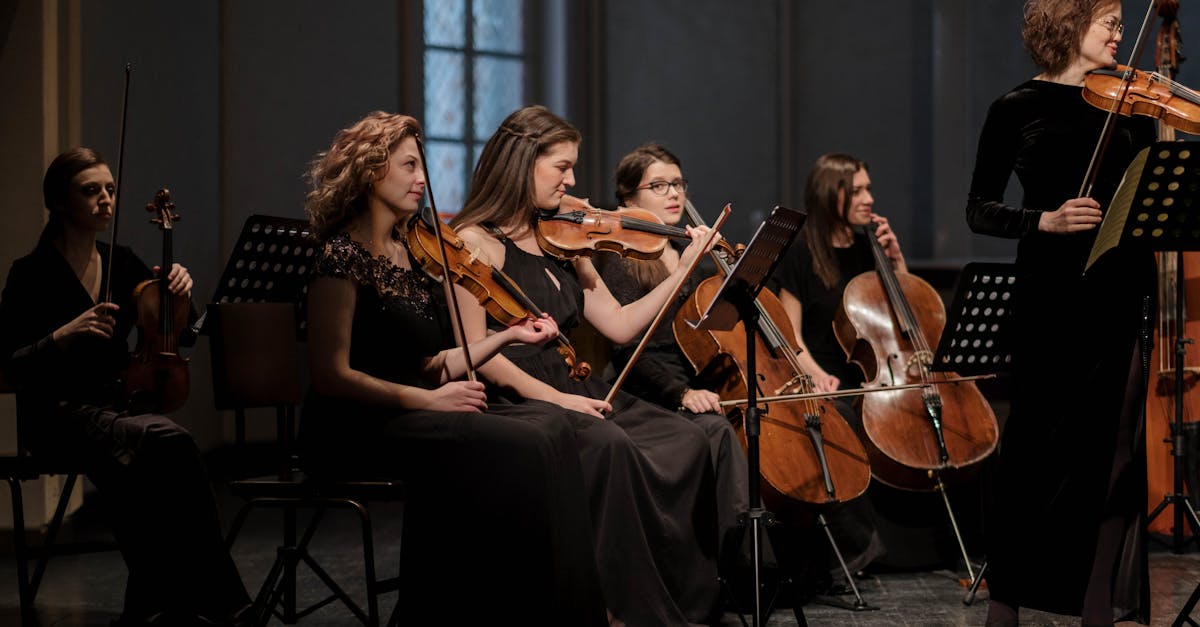Symphonic Horizons Exploring World Music
Introduction
World music encompasses a vast variety of musical traditions and styles from every corner of the globe. This genre transcends borders and cultural boundaries, offering a rich tapestry of sound that resonates with music enthusiasts everywhere. The term "symphonic horizons" aptly captures the expansive nature of world music, as it merges indigenous sounds with modern elements to create something entirely unique. From African rhythms to Asian melodies, each culture brings something special to the musical table. Exploring world music is like embarking on a journey through cultures, histories, and human experiences expressed through sound. This article delves into the fascinating realm of world music and its symphonic horizons.
Advertisement
Tracing the Origins
World music finds its roots in ancient traditions, where the sounds of nature and everyday life inspired early compositions. Indigenous communities worldwide have used music as a form of storytelling, cultural expression, and spiritual connection. Every region has cultivated its distinct musical identity—Africa is celebrated for its polyrhythms and percussion instruments, while Asia is home to melodic scales and unique vocal techniques. During the 20th century, Western musicians became increasingly interested in incorporating these global sounds into their music, leading to the rise of the world music genre we know today. This global blend has enriched the musical landscape, offering listeners endless possibilities to enjoy.
Advertisement
Fusion of Cultures
World music is not just about appreciating traditional sounds; it is about the fusion of different cultures, creating new genres that reflect our interconnected world. Projects like Paul Simon's "Graceland" showcased the potential for collaboration between musicians from different backgrounds. These collaborations have resulted in genres like Afrobeat, Bossa Nova, and Reggaeton, which blend traditional styles with modern influences to create something fresh and exciting. World music festivals often serve as melting pots for musical experimentation, where artists gather to share and create innovative sounds that defy categorization. This fusion allows people from diverse backgrounds to connect and appreciate music in a global context.
Advertisement
Instruments of the World
Instruments from around the world are the backbone of world music, offering a diverse auditory palette. African music heavily relies on percussion, with drums like djembes and talking drums providing intricate rhythms. Asian instruments such as the sitar and guzheng offer distinctive string sounds, while Middle Eastern music features traditional instruments like the oud and qanun. South American rhythms often incorporate instruments like pan flutes and charangos. Each instrument imbues world music with unique textures that forge emotional connections with listeners. As world music gains popularity, more people are drawn to learning these instruments, further preserving their cultural heritage.
Advertisement
Impact on the Global Music Scene
The rise of world music has had a significant impact on mainstream music across the globe. Artists and producers have discovered the immense richness offered by global sounds, integrating them into contemporary pop, rock, and electronic music. This trend has sparked increased interest in cultural tourism, where music enthusiasts travel to experience authentic performances in their native settings. Additionally, world music has led to the promotion of intercultural dialogue, providing a platform for marginalized cultures to share their stories with the world. As technology continues to bridge global gaps, the influence of world music is expected to grow even further.
Advertisement
Preserving Cultural Heritage
World music plays a vital role in preserving cultural heritage and identity. As the world becomes increasingly interconnected, some traditional musical forms face extinction, threatened by modernization and globalization. Enthusiasts and musicians dedicated to conservation are working tirelessly to archive and document these traditions. World music festivals and record labels actively promote lesser-known artists, ensuring their contributions are not lost with time. Through workshops and educational programs, younger generations are encouraged to learn and embrace these traditional art forms. By keeping these musical traditions alive, world music contributes to the cultural renaissance of indigenous communities worldwide.
Advertisement
World Music Festivals
World music festivals have become an essential aspect of the cultural calendar, drawing audiences and artists from all walks of life. Events like the Rainforest World Music Festival in Malaysia or WOMAD (World of Music, Arts, and Dance) attract performers from around the globe. These festivals serve as platforms for artists to showcase their talent and for audiences to immerse themselves in diverse sounds and cultures. Festivals often include workshops, discussions, and exhibitions, expanding the knowledge of global music traditions. Attendees leave with a greater understanding and appreciation of the universality of music as a language that transcends barriers.
Advertisement
Challenges in the World Music Industry
While the world music industry thrives, it faces challenges, such as fair representation and exploitation of artists. Ethical concerns arise when cultural elements are commodified without proper compensation or acknowledgment to the originators. Artisans and performers often face financial struggles despite the industry's growing popularity. Music producers and festival organizers are critically evaluating how to provide fair opportunities and recognition for artists worldwide. The industry seeks to strike a balance between promoting authentic cultural expression and ensuring artists receive their rightful dues. As awareness grows, efforts to foster ethical practices and equal representation continue to gain momentum.
Advertisement
Embracing Technology and Innovation
The digital age has opened new horizons for world music creators and enthusiasts alike. Streaming platforms and social media provide new avenues for sharing musical creations with a global audience. Musicians are increasingly collaborating via digital tools, transcending geographical boundaries to create innovative sounds. Virtual reality (VR) and augmented reality (AR) are shaping interactive music experiences, creating new ways for audiences to engage with music. As technology evolves, so does the potential for world music to reach distinct and varied audiences, further expanding its impact. Embracing technology ensures world music remains relevant and accessible in an ever-evolving media environment.
Advertisement
Conclusion
World music, with its symphonic horizons, offers a vibrant and ever-expanding landscape that resonates across cultures and continents. Through its exploration, we gain insights into diverse histories, beliefs, and traditions expertly woven into sound. As globalization advances, the world music genre only grows richer and more influential in unifying people worldwide. Festivals, collaborations, and the enduring dedication of musicians ensure its continuity for future generations. Embracing world music is to embrace the beauty of diversity and the symphony of our shared human heritage.
Advertisement







